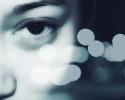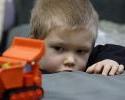Tips and Strategies to Stop
Compulsive Hair Pulling
Trichotillomania (also called compulsive hair pulling), is a disorder that results in repetitive hair pulling. Hair is usually pulled from the scalp, but it may be pulled from any area of the body; eyelashes and eyebrows are commonly pulled and in some cases, pubic hair and hair from the extremities. People with trichotillomania may have large embarrassing bald patches from the disorder. They may chew or swallow the pulled hair, resulting in potential digestive difficulties as well.
Keep the Hands Busy
Fidget toys to keep the hands busy can be an important aid in treating trichotillomania. The koosh ball is an especially good option as handling the hair-like fibers offers a stringy alternative to hair-pulling.
Strategies to Reduce Hair Pulling
The idea of treatment is to find as many alternatives to hair pulling as possible until urges to pull eventually fade away, which takes on average 10-12 weeks. The strategies below provide alternatives to pulling by keeping hands busy and reducing cues that tend to lead to pulling.
- Monitoring and recording all hair-pulling to increase awareness of the behavior and interrupt the process
- Strong smelling perfume on hands as a cue to increase awareness of when hands are near face
- Jangly bracelet as an auditory cue to increase awareness of location of hands
- Keeping hair short to reduce the availability of hair to pull
- Wearing a hat, wig, or head scarf as a barrier to prevent pulling
- Wearing gloves as a physical barrier to fingers and to make pulling more difficult
- Finger toys to keep hands occupied
- Hand exercise aids to keep hands occupied and tired
- Crafts such as beading or knitting to keep hands occupied
- Stroking a pet to keep hands occupied
- Fist clenching to resist the urge to pull
- Signs posted in places where pulling is most likely to occur as a visual reminder (i.e. a computer screen saver with a "no pulling" message)
References:
American Psychiatric Association. (2000). Diagnostic and statistical manual of mental disorders DSM-IV-TR. Washington, DC: American Psychiatric Association.
Return to About Trichotillomania...






